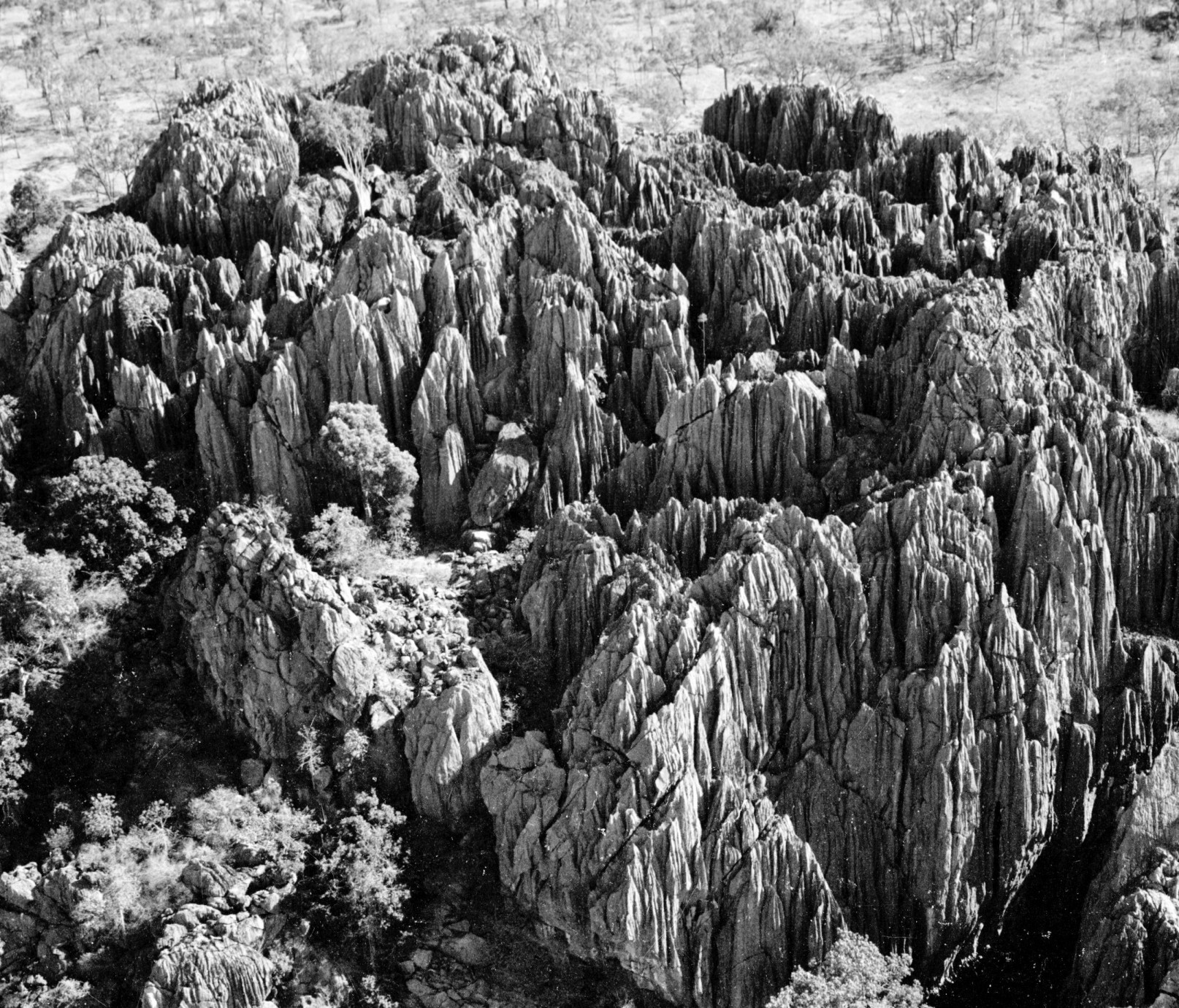Karren in tropical Australia
Papers on karren
Photos
The following areas contain karren photos from various karst areas of northern Australia.
This menu indexes specific karst areas, and also specialised karren forms.
The following text includes extracts from an early draft of my chapter 30 on Tropical Monsoon Karren in Australia for a proposed "Karren Book".
Introduction: the Tropical Australian Karst Areas
Distribution
The tropical karsts of Australia can be divided into two distinct provinces: one in the east and the other in the west (Figure). These provinces differ mainly in their geological setting.

Geological Settings
The Eastern Australian Karst Province is formed on strongly folded, steep-dipping, Palaeozoic limestones and occasional marbles. These usually form narrow linear outcrops. They are impounded karsts (sensu Jennings 1985), in which the drainage is largely controlled by allogenic streams which cross over, or cut through, the limestone belts with little loss of water underground - e.g. the Jack Hills Gorge of the Broken River. In the tropical part of this province the limestones tend to stand above the surrounding rocks as ridges and towers. The towers are structurally controlled by the shape of the folded and faulted limestone body, with some subsequent modification by scarp retreat and pedimentation or alluvial cover.
In the Northwestern Karst Province the host rocks are flat-lying to gently folded, Proterozoic dolomites and Palaeozoic limestones & dolomites. These form areally extensive regions, but in some the depth of the carbonate rock is limited to a few tens of metres. In some areas the carbonate rocks are well-exposed, with strongly karstified outcrops; others have extensive covers of Mesozoic and Tertiary sediments and Quaternary soils. There are also lateritic & silcrete capped deep weathering profiles. Chert nodules & beds are common in some of the carbonates and this can influence the degree of karstification.
Areas of soft-rock karst occur on porous marine and dune limestones of Tertiary and Quaternary age along the west and southern coast of Australia. These extend into the Tropical coast of Western Australia at Cape Range, but surface karren tend to be poorly developed compared to the hard-rock limestones and so they are not discussed in this chapter.
Climate
Northern Australia has a tropical monsoon climate. The Köppen climate classes range from Aw southwards through BShw to BWhw (Figure). On the east coast the seasonality decreases southwards and we enter the Cfa climate type. The rainfall varies from humid (e.g. Katherine) to arid (e.g. the southern part of the Barkly Karst Region), but with a pronounced seasonality with a five-month summer "wet" and a longer winter dry season. Most rain in the wet season falls either in short intense thunderstorms, or in occasional cyclonic events. There is significant variation in rainfall between years - a consequence of the "El Nino southern oscillation" effect. Potential evapotranspiration is significantly greater than actual rainfall throughout the region, giving a deficit in excess of 1000mm per annum.

When considering possible climatic influence on karst development remember that although the climates are mostly semi-arid, they are strongly seasonal and wet season storms can be quite intense. Jennings (1967) suggested that solution during the wet season may therefor be equivalent to that of tropical humid climates. So there is no need to invoke past wetter climates to explain features such as towers and the intense surface karren development.
Vegetation
Most of the region has a savanna woodland: denser and with more understory in the wetter parts, and more open in the arid regions. Open grassland is found in the dryer areas or where there is a heavy clay soil cover. Deciduous vine thicket may grow on the rocky limestone towers and grikefields. The towers provide protection for this fire-sensitive vegetation.
Aerial view of a tower at Chillagoe.

Go to Main Index menu
(c) KG. Grimes, 2003, 2005



